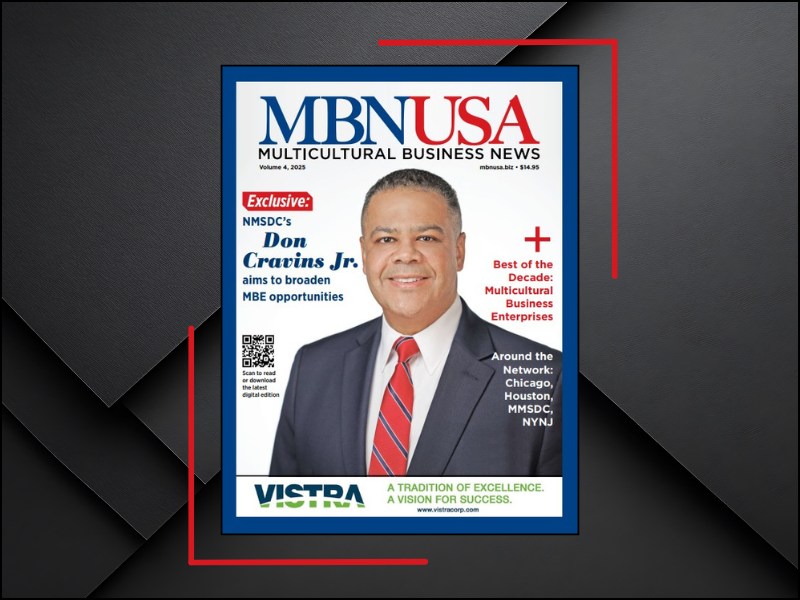According to the United
States Hispanic Chamber of Commerce, Hispanic business enterprises (HBEs) are
the fastest-growing segment in the country.
In Texas, those statistics
have new meaning. That’s because the latest U.S. Census Bureau figures show
that Hispanics are the largest population in the Lone Star State. With that
designation comes more influence and opportunities for HBEs.
Here, we catch up with
some Hispanic leaders in Texas to discuss the state of HBEs in the supply
chain, challenges, opportunities and more.
• Monica Muñoz Andry,
president and CEO, Greater Austin Hispanic Chamber of Commerce
• Dr. Laura Murillo,
founding president and CEO, Houston Hispanic Chamber
of Commerce
• Rick Ortiz, president
and CEO, Greater Dallas Hispanic Chamber of Commerce
What is your outlook for
Hispanic-owned business enterprises (HBEs) in the supply chain?
Muñoz Andry: The current
economic environment can present some challenges for HBEs. Although the
economic outlook remains uncertain, we are seeing more focus on domestic
products and nearshoring, which would allow for more business opportunities for
HBEs.
There is still potential
and opportunity for Latinos in the supply chain. Ensuring that HBEs have
firsthand knowledge of opportunities and the small business, minority-owned and
local certification to take advantage of these opportunities is important.
These certifications can help connect HBEs to the partners and support they
need to build infrastructure and put processes in place to complete the contracts.
Murillo: In Houston,
Hispanic-owned businesses are powering supply chains, small businesses and the
economic prosperity of the region. Study after study demonstrates that
Hispanics are starting businesses at the fastest pace of any demographic group,
which is an encouraging sign for their participation in the supply chain. We
are optimistic about the outlook, but there is always more progress to make.
That’s where the work of the chamber comes in and why it is so pivotal!
Ortiz: The outlook is
positive because of HBE demographics. The following data is taken from Accion
Opportunity Fund, USHCC [United States Hispanic Chamber of Commerce] and Bank
of America [Corp.] research.
• HBEs represent the most
rapidly
expanding sector among
small
businesses in the United
States,
experiencing a remarkable
34%
growth over the past
decade.
• HBEs contribute
significantly to the nation’s economy, generating over $800 billion in annual
economic activity.
• Apart from home
ownership, business ownership stands as one of the most effective pathways to
wealth-building
in America.
• HBEs are optimistic
about the coming few years, indicating:
• 81% anticipate an
increase in revenues.
• 74% are optimistic about
the
improvement of their local
economies.
• 64% of respondents have
a positive
outlook on the improvement
of the
U.S. economy.
• 43% have plans to hire
additional
employees.
When working with GDHCC
members, we find that their positive outlook mostly tracks with national
findings and data points.
What are the major
challenges for HBEs, and how is your organization helping them to overcome
these
challenges?
Muñoz Andry: Access to
capital, growth and scaling continue to be challenges for our HBEs. The chamber
continues to be a connector and convener of resources that can help in this
arena. We are hosting economic-development programming on a regular basis —
including a small business summit — in collaboration with the diversity
chambers of Diversity Ethnic Chamber Alliance (DECA). In addition, securing a
skilled workforce continues to be a challenge. Connecting workers to the skills
that are needed to advance to the next level requires continued work with our
university and job-skills development partners. The chamber provides a job
board and frequent member networking opportunities for engagement and
recruitment.
Murillo: Hispanic-owned
businesses face many hurdles. Most significantly, HBEs continue to face
challenges with access to capital and accessing other financial resources as
compared to their peers. The chamber continues to be at the table with
organizations like the Federal Reserve [Board] and the [U.S.] Small Business
Administration (SBA), advocating for the removal of these barriers. This [promotion
of access to capital and other financial resources] is important work and will
continue to be a priority for the chamber, its members and the small business
community in the Greater Houston region.
Ortiz:
• Access to capital and
credit education
• Need for private-sector
and federal
procurement contracts
• Access to technical
assistance and
capacity-building
• Digital divide with
Latinos
• Job training and
workforce development
In our work and
representation of GDHCC members, we use a comprehensive approach based on three
strategic pillars — advocacy, capacity and access — to help them overcome some
of the most pressing challenges. The strategic pillars are designed to empower
HBEs to thrive in any economic environment.
• Advocacy – Empowering
Growth: Through strategic engagements with influential leaders in both public
and private sectors, we drive economic-development initiatives and champion
policies that foster a conducive environment for growth. Our biennial Public
Policy Agenda (PPA) serves as the road map, guiding our advocacy efforts at the
local, state and federal levels.
• Capacity – Building
Strong Foundations: We are committed to equipping HBEs and other minority
businesses with the essential tools for success through our capacity-building programs
and technical assistance services. By imparting crucial business management
skills, we pave the way for sustained growth and sustainability of those we
serve through our programs. Addressing vital aspects — like access to capital
and bridging the digital divide — further fortifies their foundation for
prosperity.
• Access – Facilitating
Connections: In the world of business, connections matter. We facilitate
two-way access, linking HBEs to procurement officials and buyers in both public
and private sector entities. This interaction empowers HBEs with a comprehensive
understanding of the procurement and contracting processes, while also
providing procurement officials access to a pool of contract-ready HBEs —
fostering mutually beneficial relationships/networks.
What are the major
opportunities for HBEs, and what must they do to take advantage of these
opportunities?
Muñoz Andry: A major
opportunity for HBEs is the amount of federal funding pushed toward different
infrastructure projects. Military, city and state projects make MBE [minority
business enterprise] and WBE [women’s business enterprise] certifications more
important than ever. By joining their local chambers, HBEs have a centralized
fountain of connections and information that they can take advantage
of, connecting with and meeting with contractors in addition to
maintaining connections with procurement contractors.
Murillo: In Houston, there
are many current and future opportunities for HBEs. Hispanics represent the
largest demographic group in Harris County. So, in raw numbers alone, the
community is having an outsized impact on the economy.
Again, with the rapid and
continued growth in the number of Hispanic-owned small businesses and
entrepreneurs starting new ventures, HBEs are well-positioned to take advantage
of a favorable business climate. What we must continue to advocate for is the
inclusion of HBEs in contracting opportunities with large organizations and the
public sector. Unless we remove the structural barriers standing in the way,
HBEs — and our economy — will be unable to realize the full potential of the
opportunity in front of us.
Ortiz: Business is good in
Texas at the present and in the near future now that the pandemic has largely
subsided. There are many contract opportunities available in the public and
private sectors. The Bipartisan Infrastructure Law is investing billions of
dollars for projects at the state and local levels. These projects have ripple
effects throughout the economy, generating opportunities for those HBEs that
are not directly tied to construction.
To capitalize on the
available opportunities, HBEs wanting to elevate their capacity can leverage
tailored programs offered by organizations like the GDHCC. Our
capacity-building initiatives equip businesses with the essential skills and
expertise they need to excel. By participating in these programs, they can
enhance their competitiveness for securing contracts in the public and private
sectors.
Additionally, they must
begin to adopt artificial intelligence tools for optimized operational
effectiveness and optimization in sales, marketing, accounting and [human
resources or] HR, to name a few. With AI-driven strategies, businesses can
experience faster growth and improved bottom lines.
Recent U.S. Census Bureau
data shows Hispanics are now the largest population in Texas. What does this
mean for Hispanic-owned businesses in Texas?
Muñoz Andry: Being the
largest population in Texas positions us to increase our representation on
local, state and national platforms. We are creating a sizable impact within
the state and with that comes influence, which is an exciting moment.
People are paying
attention to the Hispanic community. Latinos are growing in representation
within our public and private sectors as entrepreneurs, innovators and
educators. This growth in leadership and representation will open more doors
for future generations.
Murillo: It means two
things. First, there is growing opportunity across the state for HBEs. With the
Hispanic community now representing a majority of the state’s population, the
community will only see their opportunities grow — as long as the business
climate is favorable to their participation.
Second, the growing
population means that there is now more competition among Hispanic-owned
businesses across the state. That’s a challenge, but also an opportunity.
Competition breeds innovation, so new and existing HBEs must innovate to
continue to grow and succeed in this increasingly competitive environment.
That’s why organizations
like the Houston Hispanic Chamber of Commerce are so important. It’s going to
take all of us to ensure HBEs are receiving the opportunities they deserve, and
we will continue to be the leading advocate for those interests locally, at the
state level and across the country.
Ortiz: The increasing
Hispanic population in Texas — especially among the younger demographic —
suggests a potential growth market for Hispanic-owned businesses. With nearly
half of the population under the age of 18 being Hispanic, there is likely to
be a greater demand for goods and services that cater to them. This demographic
presents a wonderful opportunity for Hispanic-owned businesses to tap into that
segment of the market and expand their customer bases.
Moreover, the expanding
Hispanic population offers a promising prospect for a more supportive ecosystem
for Hispanic-owned businesses. As the community grows, there arises a potential
for increased connectivity, guidance and cooperation within the Hispanic
business community. This increased connectivity, in turn, can lead to a
stronger support system and more resources for Hispanic entrepreneurs to start
and grow their businesses.
Additionally, the inherent
cultural familiarity and profound understanding of the Hispanic community can
provide a distinct edge for Hispanic-owned businesses when it comes to
establishing strong connections with their intended audience. These
entrepreneurs are better equipped to comprehend the intricate cultural
subtleties, preferences and distinctive requirements of their target market,
enabling them to customize their offerings more effectively.
To learn more about the
Greater Austin Chamber of Commerce, visit gahcc.org.
To learn more about the
Greater Dallas Hispanic Chamber of Commerce, visit gdhcc.com.
To learn more about the
Houston Hispanic Chamber of Commerce, visit houstonhispanicchamber.com.
To view full article
featured in MBN Texas, please click here.





